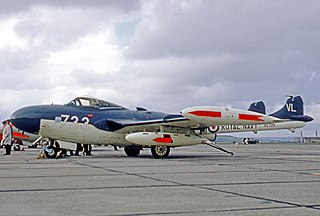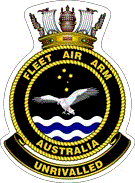See also
- Faaa, a commune in the suburbs of Papeete in French Polynesia
The Federal Aviation Administration is an agency of the United States federal government.
FAA may also refer to:

The Fleet Air Arm (FAA) is one of the five fighting arms of the Royal Navy and is responsible for the delivery of naval air power both from land and at sea. The Fleet Air Arm operates the F-35 Lightning II for maritime strike, the AW159 Wildcat and AW101 Merlin for commando and anti-submarine warfare and the BAE Hawk as an aggressor.
AAA, Triple A, or Triple-A is a three-letter initialism or abbreviation which may refer to:
AAB, AaB or Aab may refer to:
CAA may refer to:

The British Pacific Fleet (BPF) was a Royal Navy formation that saw action against Japan during the Second World War. The fleet was composed of empire naval vessels. The BPF formally came into being on 22 November 1944 from the remaining ships of the former Eastern Fleet then being re-named the East Indies Fleet and continuing to be based in Trincomalee. The British Pacific Fleet's main base was at Sydney, Australia, with a forward base at Manus Island in northern Papua New Guinea. One of the largest fleets ever assembled by the Royal Navy, by Victory over Japan Day it consisted of over two hundred ships and submarines and more than 750 aircraft; including four battleships and six fleet aircraft carriers, fifteen smaller aircraft carriers, eleven cruisers and numerous smaller warships, submarines, and support vessels. The fleet took part in the Battle of Okinawa and the final naval strikes on Japan.

The Fairey Firefly is a Second World War-era carrier-borne fighter aircraft and anti-submarine aircraft that was principally operated by the Fleet Air Arm (FAA). It was developed and built by the British aircraft manufacturer Fairey Aviation Company.

The Supermarine Walrus was a British single-engine amphibious biplane reconnaissance aircraft designed by R. J. Mitchell and manufactured by Supermarine at Woolston, Southampton.

The de Havilland Sea Venom is a British postwar carrier-capable jet aircraft developed from the de Havilland Venom. It served with the Royal Navy Fleet Air Arm and with the Royal Australian Navy. The French Navy operated the Aquilon, developed from the Sea Venom FAW.20, built under licence by SNCASE (Sud-Est).

The Fairey Seal was a British carrier-borne spotter-reconnaissance aircraft, operated in the 1930s. The Seal was derived – like the Gordon – from the IIIF. To enable the Fairey Seal to be launched by catapult from warships, it could be fitted with floats.

The Fleet Air Arm (FAA), known formerly as the Australian Navy Aviation Group, is the division of the Royal Australian Navy (RAN) responsible for the operation of aircraft. The FAA was founded in 1947 following the purchase of two aircraft carriers from the Royal Navy. FAA personnel fought in the Korean War and the Vietnam War, and participated in later conflicts and operations from host warships.

HMAS Albatross is the main naval air station for the Royal Australian Navy's (RAN) aviation branch, the Fleet Air Arm. The base, located near Nowra, New South Wales, was formally established in May 1942 as Royal Australian Air Force (RAAF) base RAAF Nowra, then was transferred to the Royal Navy as HMS Nabbington in 1944, and operated as a naval air station until it was decommissioned in late 1945. In 1948, the airfield was commissioned into the RAN as HMAS Albatross, as the primary shore base for the Fleet Air Arm. Since 2011, four squadrons of the Fleet Air Arm operate from Albatross. The current commander of the base is Captain Robyn Phillips, RAN.
The Force Element Groups (FEGs) of the Australian Defence Force are the operational capabilities.
West Sale Airport is located about 5 nautical miles west of Sale, Victoria, Australia, off the Princes Highway.
Gaa may refer to:
Admiral Sir Victor Alfred Trumper Smith, was a senior officer in the Royal Australian Navy. Smith's career culminated with his appointment as chairman, Chiefs of Staff Committee—forerunner of the role of Australia's Chief of the Defence Force—from 1970 to 1975, following an earlier term as Chief of Naval Staff from 1968 to 1970.

808 Naval Air Squadron is a ship-based helicopter squadron of the Royal Australian Navy.

The first involvement Australia had with naval aviation was in 1911, when an Australian-born Royal Navy officer became one of the first four naval officers to receive pilot qualifications. During World War I, the Royal Australian Navy (RAN) experienced several forms of airborne operation, with HMAS Brisbane operating a seaplane, while HMA Ships Sydney and Australia were used for experiments with aircraft launch platforms. An aircraft embarked aboard Sydney was also involved in one of the first naval air battles. Several Australians also flew as part of the Royal Naval Air Service.

The McDonnell Douglas A-4G Skyhawk is a variant of the Douglas A-4 Skyhawk attack aircraft developed for the Royal Australian Navy (RAN). The model was based on the A-4F variant of the Skyhawk, and was fitted with slightly different avionics as well as the capacity to operate AIM-9 Sidewinder air-to-air missiles. The RAN received ten A-4Gs in 1967 and another ten in 1971, and operated the type from 1967 to 1984.
Harry Fritz is a Canadian-American former professional tennis player.